Data on shared e-scooters in Louisville, Kentucky are analyzed.
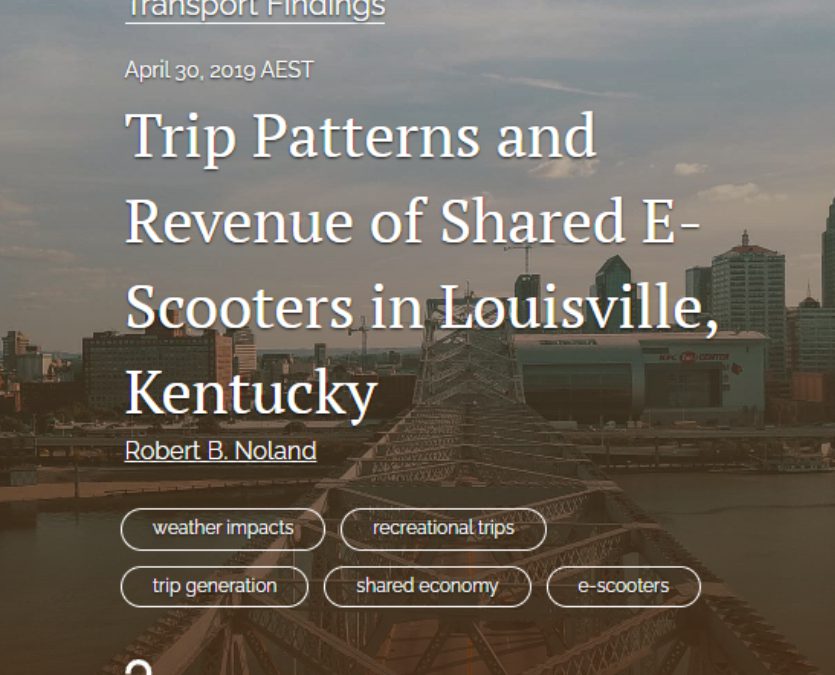

Data on shared e-scooters in Louisville, Kentucky are analyzed.
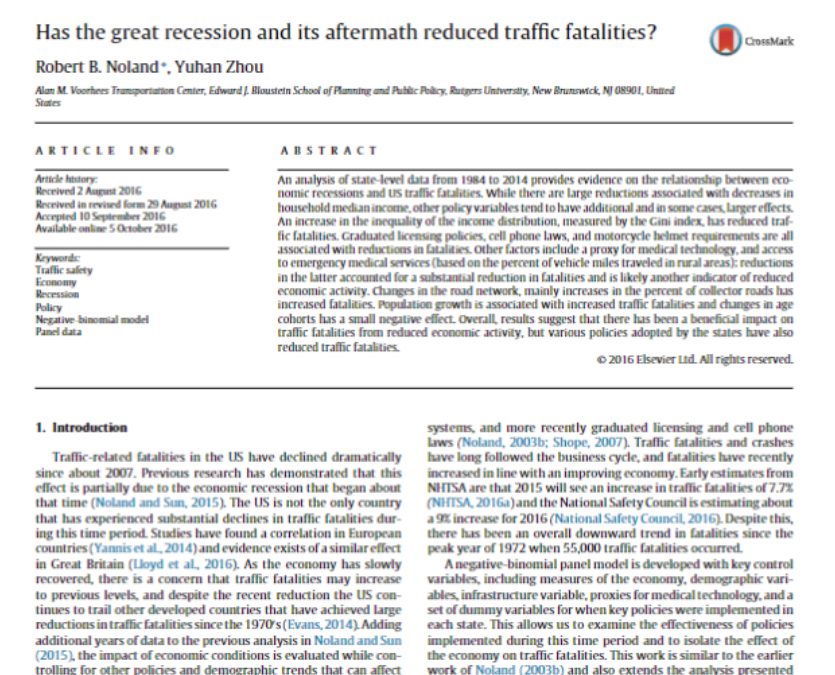
An analysis of state-level data from 1984 to 2014 provides evidence on the relationship between economic recessions and US traffic fatalities.
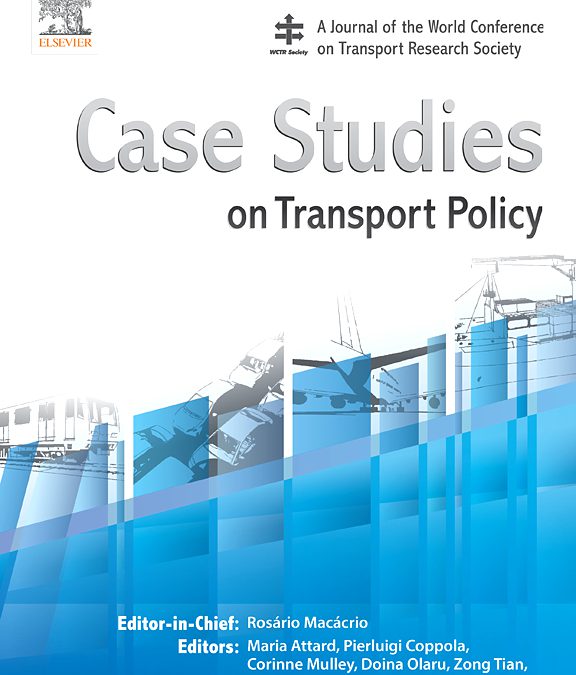
A response to the six points made by Le Vine and conclude with a brief critique of existing practice.
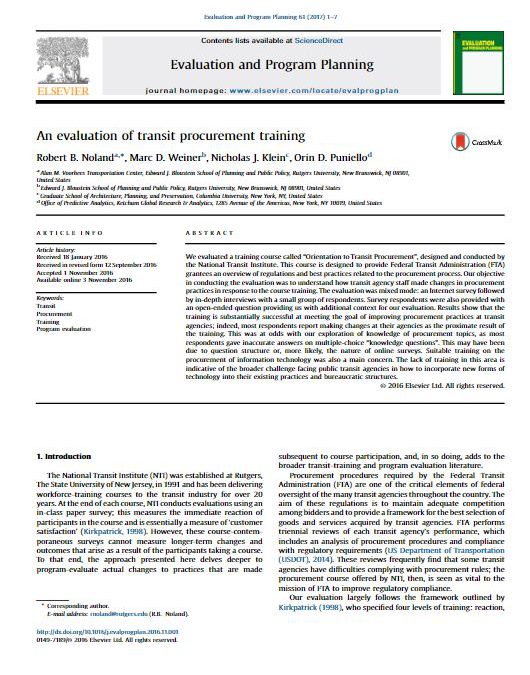
We evaluated a training course called “Orientation to Transit Procurement”, designed and conducted by the National Transit Institute.

The question addressed here is how, if at all, TOD and TOD-proximate residents’ perceptions of the benefits and shortcomings of TOD are perceived and addressed by professionals involved with TOD planning and development.
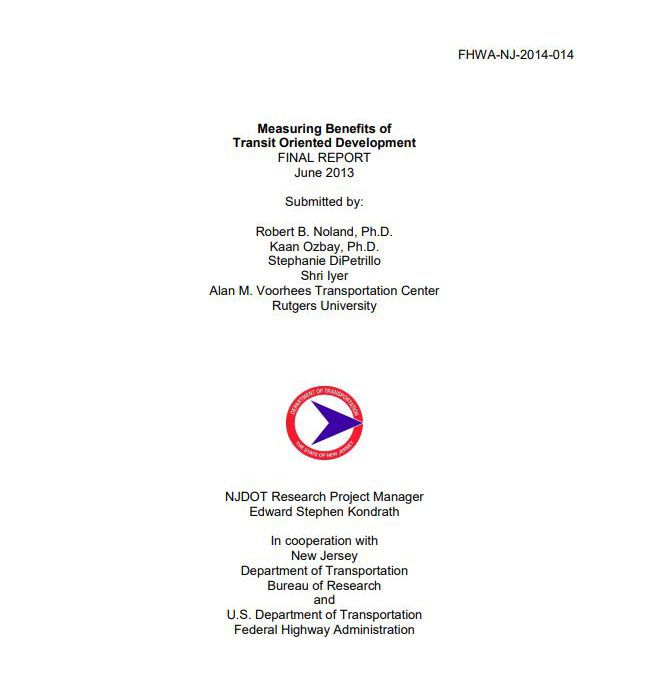
This study provides an overview of the beneficial impacts of transit-oriented development – compact, mixed-use pedestrian land uses within walking distance of transit stations.
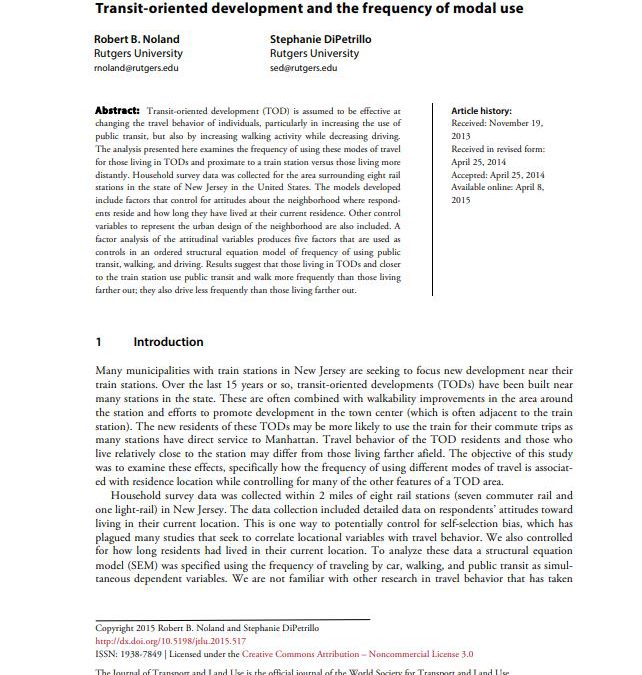
The analysis presented here examines the frequency of using these modes of travel for those living in TODs and proximate to a train station versus those living more distantly.
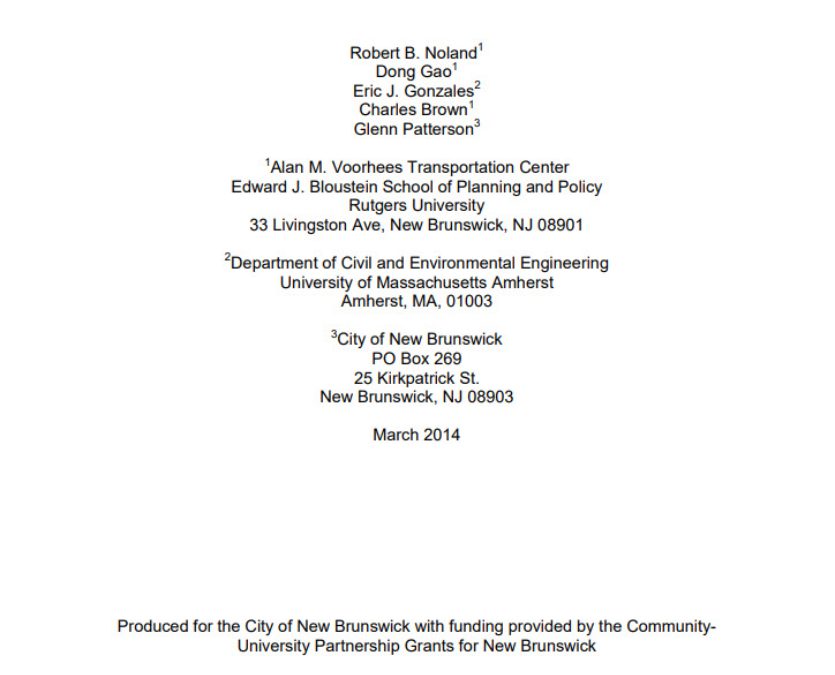
The analysis presented here is of a candidate road diet conversion site, Livingston Avenue in New Brunswick, New Jersey, an oversized arterial corridor accessing the center of the city.
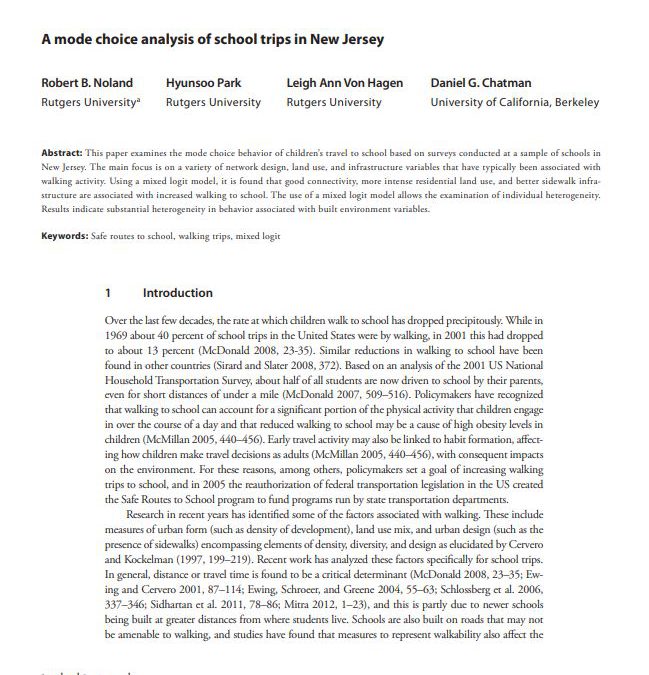
This paper examines the mode choice behavior of children’s travel to school based on surveys conducted at a sample of schools in New Jersey.
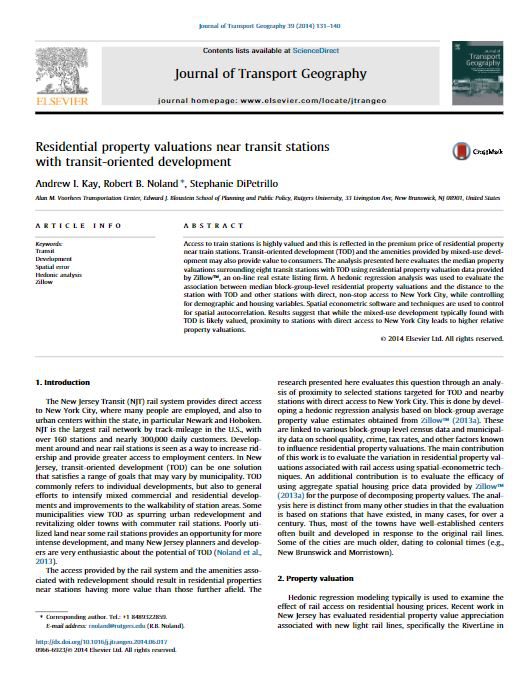
The analysis presented here evaluates the median property valuations surrounding eight transit stations with TOD using residential property valuation data provided by Zillow™, an on-line real estate listing firm.
With improved portability and affordability, eye tracking devices have facilitated an expanding range of cycling experiments aimed at understanding cycling behavior and potential risks. Given the complexity of cyclists’ visual behavior and gaze measurements, we...
We contribute to the literature on new mobilities by measuring spatial disparities in travel times for accessing essential non-work destinations via ridehailing. We focused on healthcare, restaurants, and grocery destinations in Chicago. Data from Chicago ridehailing...
How and why do zero-car households seek car access? We used a national online survey of 830 American adults and interviews with twenty-nine low- and moderate-income travelers about their car access behaviors to answer this question. We validated our findings with the...
We examine who can work from home during the pandemic and whether this behavior will persist post-pandemic by conducting two representative online surveys in New Jersey. Results suggest those with higher educational attainment, higher incomes, and prior experience...